How to significantly increase your website's conversion rate
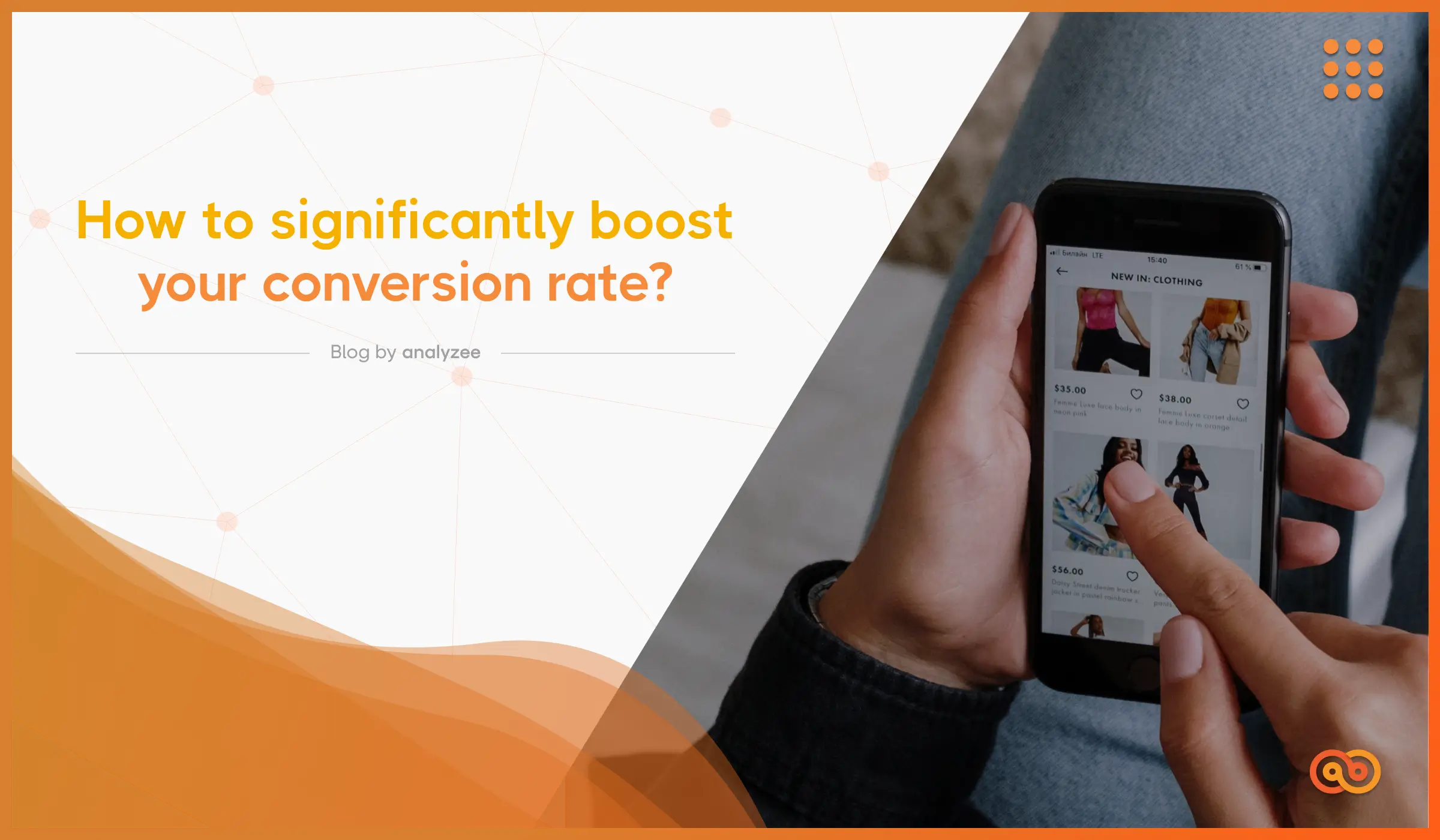
Lately we’re been working on giving our platform a big makeover, from its look to its branding. This exciting update has gotten us really into Conversion Rate Optimization (CRO) — a key way to make our site better for everyone.
In our work and studies, we’ve discovered that focusing on Conversion Rate Optimization (CRO) is really the best way to boost a websites’ conversion rate.
While trying to boost conversion rates, businesses often make unnecessary mistakes, such as:
- Lowering their prices
- Running Constant Promotions
- Overuse of Pop-ups
- Neglecting user experience (UX)
- Ignoring Customer Feedback
- Relying solely on SEO traffic
These strategies share two critical flaws:
- None of them are customer-centric… Nothing focuses on what the visitors want to see or hear. They’re more interested about making as much money as possible from their visitors and not giving them what they’re looking for.
- Both of these strategies focus on short-term gains or surface-level changes and not on addressing the deeper issues that lead to long-term, sustainable improvements in conversion rates.
CRO or Conversion rate optimization — What it is?
Conversion Rate Optimization (CRO) is a process of boosting the number of visitors on your website who take the action you want them to. Whether that’s filling out a form, making a purchase, or any other goal you’ve set.
It’s a strategic approach to convert more of your site’s visitors into customers, through well-researched best practices
Preparation in 4 steps
Step No.1 — Identify the specific conversion goal (e.g., free trial signup or purchase) before optimizing. That way you can be more specific in your optimizations.
Step No.2 — It’s also highly recommended that you calculate your CVR before starting anything so you can easily track your progress.
Step No.3 — Analyze your audience. Map out your Ideal customer profile so that you can get even more specific in your creatives, copy etc. Here’s what you need to include in your ICP:
- Age, Gender, Income Level, Marital status, Occupation or industry
- Country, Language
- Interests, Hobbies, Values, Lifestyle choices
- Specific problems they face that your product/service can solve
- Common objections or hesitations they might have
- Their favorite social media platforms
- Who or what influences their buying decisions
- Average budget
This should give you a rough picture of who you want to write your copy for, and later when you are more informed you should update and iterate it.
Step No.4 — Analyze your highest-performing competitors and audit what they are doing. You need to do this in as much detail as possible. Go over their creatives, FAQs, headlines and write down your findings. Repeat the process for about 5–8 competitors and then just filter out everything that ALL of them are doing.
Boom! If you do every step that’s listed you will have a very solid foundation for starting your CRO adventure.
Now let’s get into the actual tips.
CRO Fundamentals — 8 tips for guaranteed success
1. Mention your strong value proposition right away
Your headline should in one short conversational sentence explain the main benefit of your product. If your target audience are gamers and you are selling a energy drink, your headline would go somewhere along the lines of:
“Hydration, energy, performance. Zero Sugar”
This is just a rough example, but you get the point.
After an effective headline you need a subheadline that will introduce your products’ name and exactly what it does. List out some of it’s most prominent features. Continuing with the energy drink example, your sub headline would be:
“Introducing Energiz, your secret weapon for a consistently incredible performance. Our new formula with 0% sugar will keep you hydrated & focused without compromising its' taste or your health”
Then you want to list out your unique features that set you apart from the competition. You want to make them as visually pleasing as possible.
It should look something like this:

Here’s an example of a good hero section:
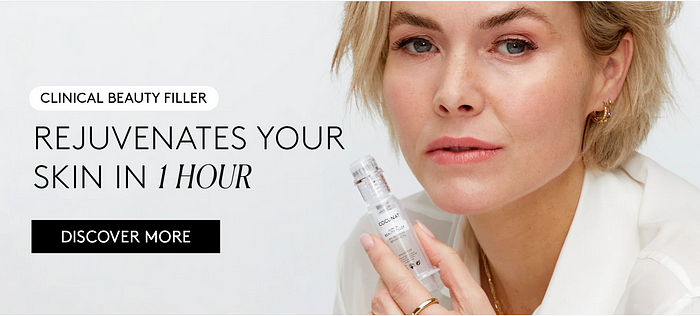
Now your visitors know exactly what the product does and how is it different from the competition immediately after landing on your site. If your targeting is good, this should already catch their attention and entice them to look around your website.
2. Building trust with the visitors
With tons of products online, people are becoming very skeptical when looking at new products, so we’re going to build trust to win them over.
We do that in 2 ways:
- Reviews: You want to clearly state the number of verified customers and their average rating of your product. This shows your visitors that people just like them really love your product, which most definitely helps build trust.
- Logos: Displaying logos from well-known companies that have used your product or mentioned you, really helps with gaining trust. If these reputable companies trust you, visitors will feel they can too.
Here’s a good example of both:
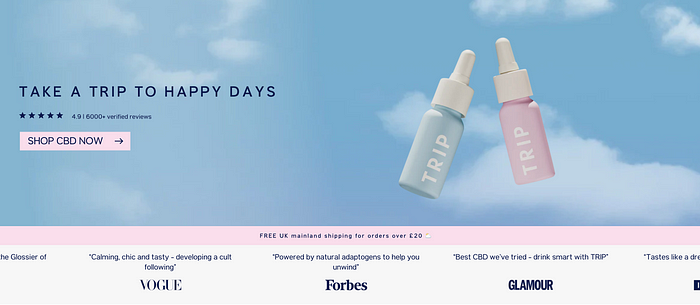
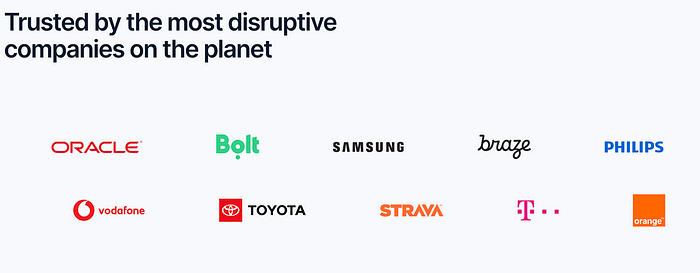
3. Creatives
You need to capture your visitors attention with stunning, high quality images that match your websites’ color scheme. Your images are often the first impression somebody gets, and it should set the stage for a positive user experience.
It should show your product in an environment that’s attractive to your ICP, potentially showing it’s benefits as well.
Here’s an example of a visually striking creative that's building trust:
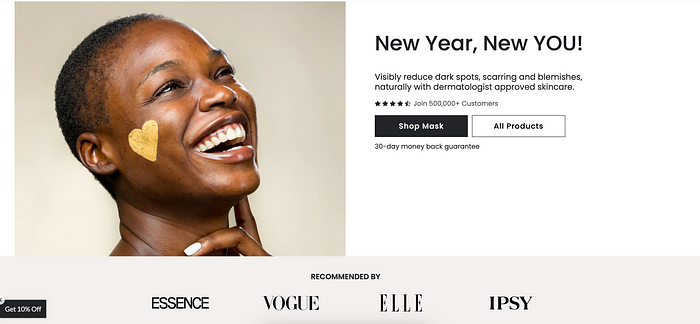
4. Your product page
If all the steps before are done correctly people should’ve moved on to your product page/section, and after grabbing their attention this is the most important part of your website. Think of it as your sales pitch where you should address the following in more detail:
- Simplify usage — Outline in three steps or fewer how the product can be used, aiming for clarity and simplicity. This demonstrates ease of use and accessibility.
- Higlight key benefits — Detail another prominent feature of your product. Immediately link this feature to a direct benefit making it relatable and desirable for the reader.
- Extra functionality — Mention an additional perhaps unexpected, function of the product that adds value, further justifying the investment.
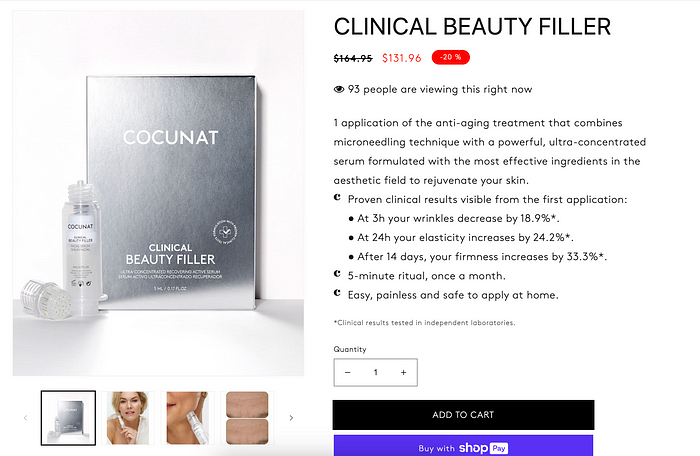
- Address objections — Tackle a potential objection by acknowledging it and providing a reassuring counterpoint that emphasizes the product’s benefits.
- Bullet points — Use bullet points to concisely list all significant features alongside their benefits, making the information easily digestible.
- Problem solving — Briefly reiterate the main issues the product solves, reinforcing its value proposition.
- Strong Call to action — End with a compelling call to action that encourages immediate action and pair with a big button that is clearly visible and has unique copy. Reinforce the value of the deal by linking the price and discount directly to the significant benefits the product delivers in your CTA copy.
- Price — This is very important. You need to clearly state the product’s price upfront, ensuring customers understand the value they are getting. Detail the discount available, specifying both the percentage off and the new, lower price to illustrate the savings.
Pair this with a good CTA that hints at limited availability, urging immediate action to take up the offer.
Don’t forget to list out any special offers you might have such as “Free shipping on order over $79” “Buy 1 product and get a $20 gift”.
The copy that will be right next to the picture should contain these:
- Simplify usage
- Highlight key benefits
- Bullet points
- Special offers
- Price
- CTA with big button
Everything else will go under the main copy and will serve a purpose to reinforce the visitors’ beliefs about the product.
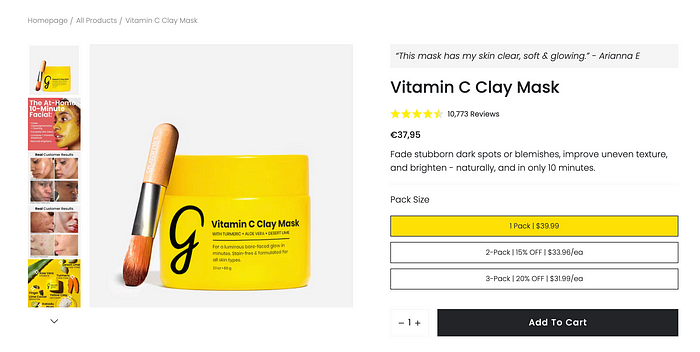
Check out this page to see how a well-written and built product page looks like:
5. Strategically crafted FAQ Section
This area serves as a bonus, preemptively answering unasked questions that linger in the customers’ mind.
- Craft questions in a way that positions a ‘No’ answer as advantageous, turning potential objections into a strength
- Make sure that each questions subtly addresses common hesitations or doubts, using the format to directly communicate the additional benefits and unique features of your product.
- Responses should not only answer the question but also highlight unexpected bonuses and features.
By doing this you make sure that there is no question left unanswered. You also deal with every concern and objection so that there is no negative thoughts left about your product.
As you can see, everything on your website should serve a purpose of reinforcing the visitors beliefs about the product.
6. Checkout
Your checkout should be as simplified as possible for obvious reasons. It should minimalistic and clean with easily readable input fields.
As well as a clear overview of what the visitor is buying. Now, do you want to maximize your conversions and bring up your AOV? That’s where upsells and cross-sells come into play…
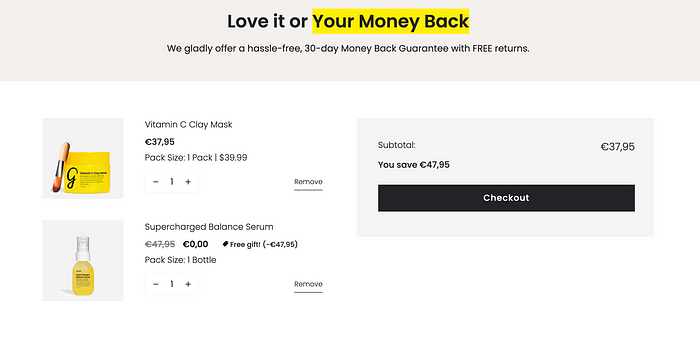
Upselling
Upselling involves suggesting a higher-end version of the product the customer is already considering. For example, if a customer is buying a basic software package, during checkout, you might offer an upgrade to the premium package that includes additional features.
Cross-selling
Cross-selling entails recommending related products or accessories that complement what the customer is buying. For instance, if a customer is purchasing a laptop, you might suggest adding a laptop case or an extended warranty plan during the checkout process.
Best practices for upsells and cross-sells during checkout
- Make sure the upsell or cross-sell items are related to the original purchase and add value to the customer.
- Too many offers can overwhelm customers and potentially lead them to abandon their cart.
- Offering a special discount or bundle pricing for the additional products can heavily entice the customers to accept it.
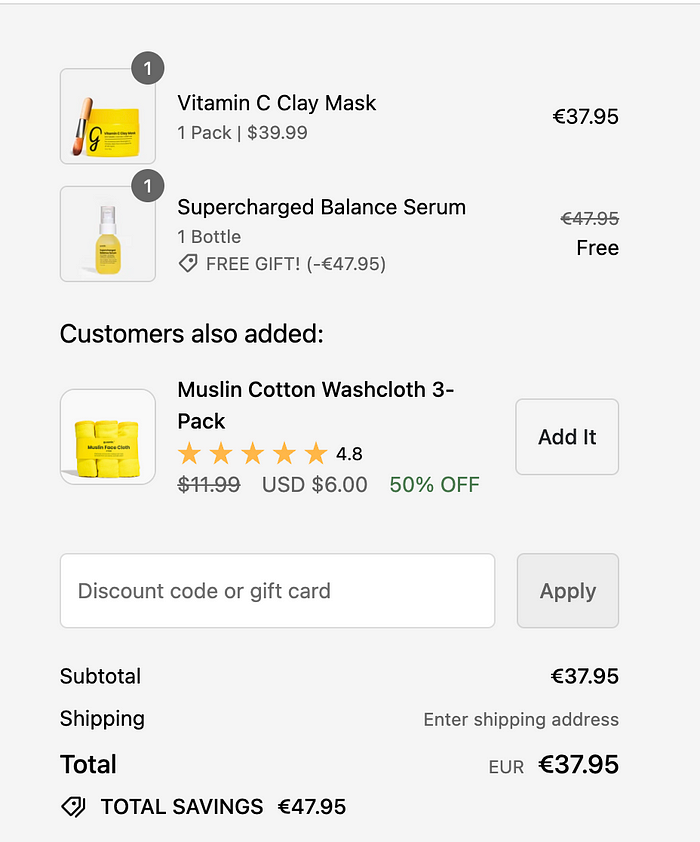
This has been proven over and over again to be one of the most reliable methods of boosting conversions.
This shouldn’t prioritized before any of the thing listed before as people first need to get to the checkout for you to upsell them.
7. Page load speed and & mobile optimization
This needs to be prioritized along the way because on average more than half of your visits come from mobile devices, if not more.
- For page load speed you need to optimize images, leverage browser caching, minimize JavaScript and unused CSS.
- Mobile optimization — Ensure your website design is responsive, simplify menus and forms to provide a seamless, user-friendly experience on mobile devices.
Additional conversion enhancers
If you followed the steps outlined in this blog correctly, it’s almost impossible for you to not see an improvement in your conversion rate.
Yet, there’s an additional innovative solution you can apply, not directly linked to your site’s design or content.
Imagine a fully GDPR, CCPR compliant AI that silently observes your visitors’ behavior, identifying those who are indecisive and gently pushing them towards a purchase.
Now imagine this system operates independently, requiring no day-to-day management from you.
Over time, it learns and adapts, becoming increasingly effective at converting visitors into customers.
And the best part?
It being entirely performance-based, meaning you invest in results.
This game-changing technology is known as HotLeads — Analyzee’s latest product in developement. Be on watch for it’s grand release this year.
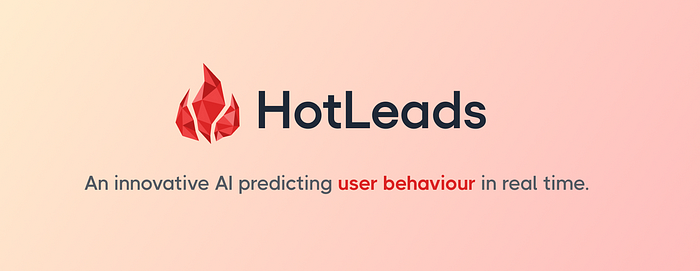
Now, turning our attention to Analyzee, this platform offers an essential toolkit for in-depth analysis, showing you every metric you need to make strategic decisions. It’ helps you understand your audience deeply and interact with them effectively, further boosting your conversion potential.
“Improving our users’ experience, ultimately results in a conversion rate boost and an elevated ROI. With Analyzee, we can quickly spot and resolve any obstacles, giving our users the experience they deserve.”
- Leila Gabela, COO @ Plodovi.hr
Together, Hotleads and Analyzee empower your website not just to attract visitors, but to convert them with precision that traditional strategies alone can’t achieve.
Conclusion
Boosting your website’s conversion rate really boils down to smart tweaks that make your visitors feel good about your product. From avoiding common traps to implementing proven CRO tactics, it’s all about focusing on what your visitors truly need.
We’ve talked about everything from getting your value proposition right, building trust, designing visuals that convert and fine-tuning your product page for the biggest impact. Plus, we’ve emphasized the importance of a smooth checkout, smart upselling, and making sure your site is fast and easy to use on mobile.
In short, it’s about creating a great experience that turns browsers into buyers and buyers into loyal customers.
Stick to these steps, and you’re setting yourself up for success.